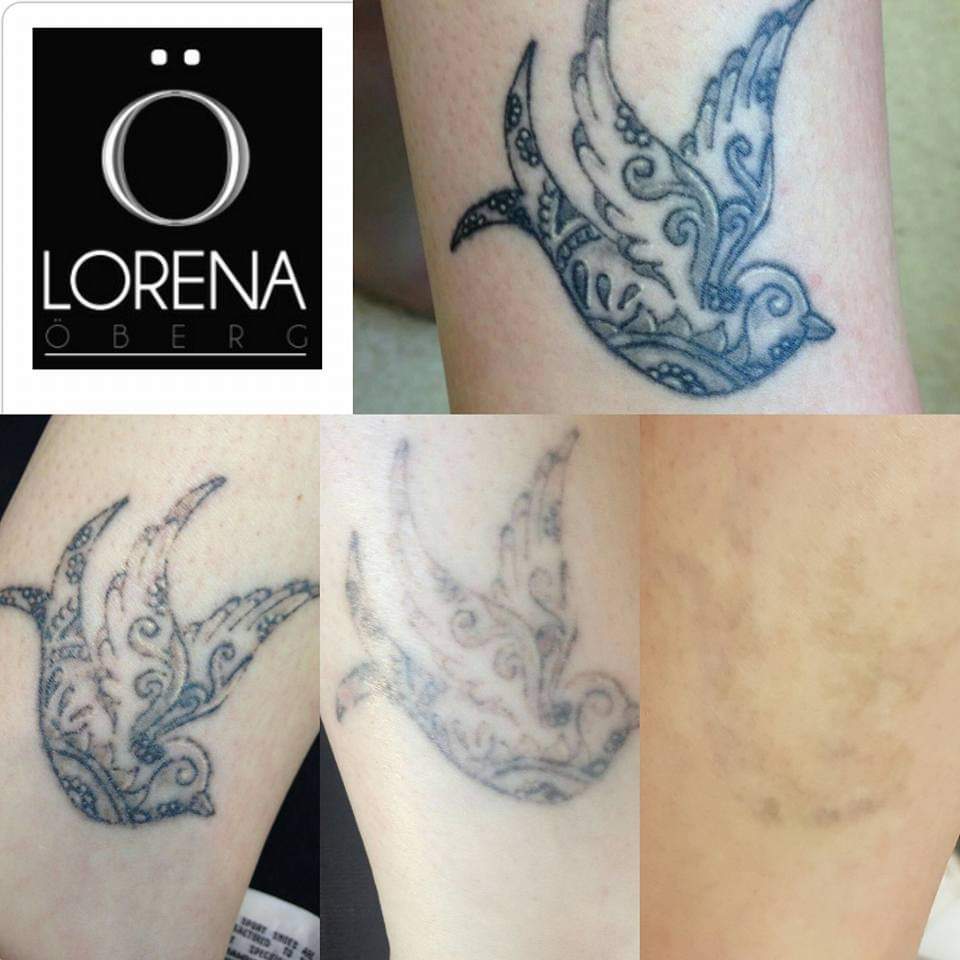Tattoo Removal – When to Stop Treatment – How Many Treatments
Estimated reading time: 5 minutes

Tattoo removal is a journey that requires patience and commitment. However, there comes a point where you may need to consider whether to stop your tattoo removal treatment. This post will give you information to help you determine when it’s time to stop your tattoo removal journey.
Tattoo Removal Treatment Expectations
There is no clinic, anywhere that can offer you 100% removal. I do know that there are many clinics telling people that they can achieve 100% removal, the problem is that no one can guarantee this. The reasons for this are:
- Different inks and ink colours: Whilst we are here on this end of the industry finding new and creative ways to remove tattoos, the tattooing industry is formulating more stable long lasting inks. If your tattoo is all black and done 10+ years ago there is a chance to get it off near enough completely off without a scar. However, if your tattoo has been done in the past 5 years and has colours, we are looking at a far more complicated treatment. Ink concentration will be far higher and the inks will be a lot more stable due to new technology.
- How deep the tattoo was made: This is important due to ink concentration and possible scaring. An inexperienced tattoo artist will tattoo deeper in the skin depositing far more ink than someone experienced. This may also cause a scar which will interfere with the laser light properly reaching the molecules.
- A person’s individual metabolism: Ultimately it is your metabolism that will get rid of the ink. People who are runners or go to the gym a lot will shift the ink a lot faster than the rest of us mere mortals.
Assessing Your Tattoo Removal Progress
Is your tattoo still fading?
Your tattoo should fade after every treatment. The first and second treatment is when you will see the most fading. This is because the ink concentration is high and therefore the laser will read the ink very well. Also, the ink molecules are still whole and the laser will smash them and the smaller ones will immediately go through the blood system. You should get roughly 50% improvement in the first 2 treatments. Further treatments will break the particles down even further.
Why is my tattoo not fading anymore?
There are a few contributing factors that will lead to the stagnation of ink:
Blood circulation: Your blood stream is what will take the ink molecules through the lymphatic system. People who exercise a lot tend to have far faster fading.
Molecule size of the ink: Every time you have a tattoo removal session the ink particles are broken down more and more. With time it becomes more difficult for laser, regardless of laser, to read the last little molecules.
The usual solution most technicians use is to turn the power up on the laser, often leading to hypo pigmentation or white patches in the skin. In the tattoo removal game, more power does not equal better results. There is a power sweet spot, anything over that will just lead to skin damage. This sort of scaring is very frustrating because it’s a scar left on your body in the shape of the very tattoo that you’re trying to get rid of. We often deal with hypo pigmented scar removal treatment at our clinic.
The condition of your skin: Skin can really take a beating with laser tattoo removal. This is why I like treatments with 6 to 8 weeks gaps. The more treatments that you have, the more sensitive that your skin becomes. In order to have good results the skin needs to be healthy so that the blood flow is in no way interrupted. If your skin gets blisters easily, is sore and red for a long time after the treatment you need to let your technician know so that the treatment can be tailored. Make sure that you follow the tattoo removal aftercare and keep the area clean. Infections lead to scars.
Things that you can do to fade your last traces of ink
- Time: I know that this is not what you wanted to hear but time is the biggest of healers when it comes to tattoo removal. Time will allow your skin to really heal to the point where it’s happy to be abused again giving you great results again. Along with the skin healing, the ink molecules tend to bond back together making it easier for the laser to read them again. This means that the tattoo that was not shifting a years ago, not only has it faded on it’s own but now reacts again to the laser.If you can leave it 6 months to a year, you will see the tattoo fading on it’s own. The next removal session will work like a dream.
- Massaging the area: Hand held massagers stimulate blood flow which helps disperse the ink molecules present. A daily massage of the area will really make a difference. Make sure that you take photos or you will forget that you’re making progress.
- Exercise: I know, I know….but we do know that athletes do better with tattoo removal. Again, it’s down to blood circulation.
How many treatments should removal take?
I like to get tattoos out in between 6 and 12 treatments. If you’re around the 10 treatment mark, you need to start assessing if it’s time to stop and give your skin a break.
Knowing when to stop tattoo removal treatment is crucial for achieving the best possible outcome. You need to asses your progress, consider skin reaction, manage expectations, evaluate pain tolerance, budget, and time commitment. Seeking professional advice when needed, you can make an informed decision about when to end your tattoo removal journey. Remember, it’s essential to prioritise your skin health and overall well-being throughout the process.
You can book a free video consultation with Lorena HERE.

